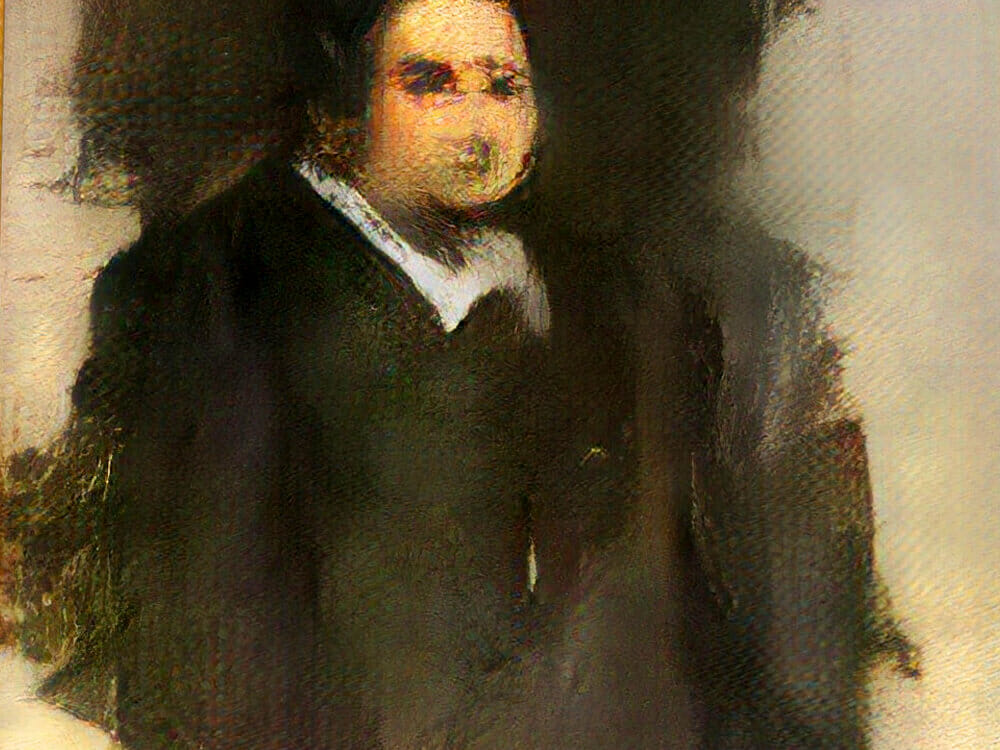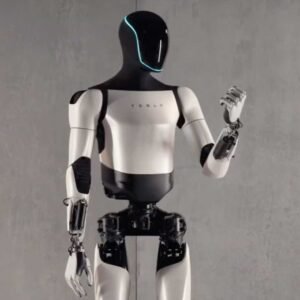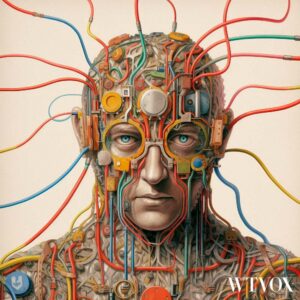With creative AI emerging, art creation doesn’t seem to be unique to humans, not anymore.
Creativity is one of the few traits that make humans different from other species.
We alone can make music and art that speak to our experiences or illuminate truths about our world.
But suddenly, humans’ artistic abilities have some competition—and from a decidedly non-human source; Artificial Intelligence.
Emergence Of Creative AI
Over the last couple of years, there have been some remarkable examples of art produced by deep learning algorithms.
McKinsey estimates creative AI will annually generate a value of $3.5 to $5.8 trillion across various sectors.
Source: McKinsey Global Institute analysis
They have challenged the notion of an elusive definition of creativity.
They have put into perspective how professionals can use artificial intelligence to enhance their abilities and produce beyond the known boundaries.
But here, creativity is the result of code written by a programmer.
It is indeed designed using a format given by a software engineer, featuring private and public datasets.
Yet, creativity is more than matter and code.
So, the question is how do we assign ownership of creative AI-generated content?
In particular, who has the ownership of an AI’s creative artwork, beyond the programmed algorithm?
Bear in mind, to be considered creative art, the programmed algorithm has to use pre-existing forms of art, as sources of inspiration.
Who Would Own Creative AI?
In 2018, a portrait that was christened Edmond de Belamy was made in a French art collective called Obvious.
It took a database with 15,000 portraits from the 1300s to the 1900s, to train a deep learning algorithm to produce a ‘unique’ portrait.
Pierre Fautrel, the co-founder of Obvious, standing next to “Edmond de Belamy, from La Famille de Belamy.”
The painting sold for $432,500 in a New York auction.
Similarly, another creative AI program called Aiva, trained on thousands of classical compositions, has released musical albums whose pieces are now being used by ad agencies and movies from all over the world.
Aiva team: (From left to right) Denis Shtefan, CTO; Arnaud Decker, CMO; Vincent Barreau, COO, and his brother Pierre Barreau, CEO.
Yes, the datasets used by these two algorithms were different.
Still, behind both AIs, there was a programmer who converted the brush lines and strokes and the musical notes into lines of code.
There was a data scientist or engineer who fitted and ‘curated’ the datasets to be used by their digital model.
There could also have been user-based input, and the output may be biased towards individual styles or unintentionally infringe on similar pieces of art.
This shows that there are many collaborators with distinct roles in producing creative AI content.
The problem occurs not only in video, painting or music. Fashion is increasingly created by AIs and it’s important to discuss who owns creative and proprietary interests.
Creative AI Ownership Guideline
A perspective article published in Nature Machine Intelligence by Jason K. Eshraghian in March looks into how creative AI ‘artists’ and collaborators involved should assess their ownership.
Nature Machine Intelligence by Jason K. Eshraghian
“It started by laying out some guiding principles that are only applicable for as long as creative AI does not have legal parenthood, similar to the way humans and corporations are accorded.”
Before looking at how collaborators can protect their interests, it’s useful to understand the basic requirements of copyright law.
“The artwork in question must be an original work of authorship fixed in a tangible medium.”
Given this principle, the author asked whether it’s possible for creative AI to exercise creativity, skill, or any other indicator of originality.
The answer is still straightforward—no—or at least not yet.
Currently, AI’s range of creativity doesn’t exceed the standard used by the US Copyright Office, which states that:
“Copyright law protects the “fruits of intellectual labour founded in the creative powers of the mind.”
Due to the current limitations of narrow creative AI, it must have some form of initial input that helps develop its ability to create.
At the moment, creative AI is just a tool used to produce creative work in a similar way to a video camera used to record content.
Video producers don’t need to comprehend the inner workings of their cameras; as long as their content shows creativity and originality, they have a proprietary claim over their creations.
| Most-Read Articles |
The same concept applies to programmers developing a neural network.
As long as the dataset they use as input yields an original and creative result, it will be protected by copyright law.
They don’t need to understand the high-level mathematics, which in this case are often black-box algorithms whose output it’s impossible to analyse.
Algorithms As ‘Creatives’ That Own Copyrights?
The author pointed to the recent patent case of Warner-Lambert Co Ltd versus Generics where Lord Briggs, Justice of the Supreme Court of the UK, determined that:
“The court is well versed in identifying the governing mind of a corporation and, when the need arises, will no doubt be able to do the same for robots.”
In the meantime, Dr Eshraghian suggests four guiding principles to allow artists who collaborate with creative AI, to protect themselves:
Programmers need to document their process through online code repositories like GitHub or BitBucket.
Data engineers should document and catalogue their datasets and processes used to curate their models.
In cases where user data is utilised, the engineer should “catalogue all runs of the program” to distinguish the data selection process.
Finally, the output should avoid infringing on others’ content through methods like reverse image searches and version control.
It could, in some ways, be interpreted as a way of determining whether user-based input has a right to claim the copyright too.
AI-generated artwork is still a very new concept, and the ambiguous copyright laws around it give a lot of flexibility to creative AI artists and programmers worldwide.
The guiding principles Eshraghian lays out will hopefully shed some light on the legislation we’ll eventually need for this kind of art, and start a meaningful conversation between all the stakeholders involved.
WTVOX – ‘Voicing the Future of Fashion’
For more similar content and lightning-quick updates delivered directly to your inbox subscribe to our weekly newsletter.
For daily news in sustainable fashion, innovation, conscious beauty and lifestyle follow us on social media: Instagram, LinkedIn, Facebook, Twitter.
Finally, if you want to interact with thousands like you, join your tribe on the Future of Fashion Group.
A decade of fashion; here’s to the next one.The past decade has been turbulent – and defining – for fashion: child labour, climate crisis, gender inequality, animal cruelty, and reckless plastic pollution, just to name a few. With the COVID-19 pandemic, the beginning of this decade does not look too good either. That’s why finding media that reports with rigour and integrity at heart is difficult in critical times. Finding media that informs all, regardless of where they live or if they can afford to pay, is even harder. In these times, independent fashion media magazines are increasingly silenced by commercial ownership and social media misinformation. So far, your unceasing support has allowed us to keep delivering trustworthy, relevant, high-quality content. Your support allowed us to uphold our editorial independence and ensure honest journalism, free from commercial ownership or political bias. We are deeply grateful for your generosity and continue to count on your support. Thank you. |






